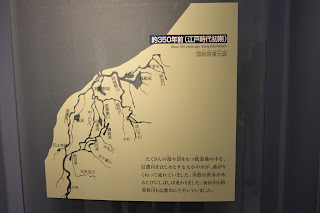On the morning of the second day of the field trip to Niigata, the local MLIT officers explained about the flood countermeasures in the prefecture, while in the afternoon a prefectural officer guided us along the river to visit the locations and see the implementations.
Niigata prefecture has had many flood disasters in the past decade. Notable floods occured in July of 2004 and 2011. Both times, the affected areas received countermeasures, and since the GEJET even more measures are taken, even specifically for vulnerable people. While the shelters aren't currently prepared for people with medical complications, it is being discussed how to prepare them. Neighborhood associations help people perform drills and transport those who need help to the evacuation shelter.
Issues for which there are no solutions yet are the lack of a unified coloring system to indicate the different levels of 'flood danger level' and 'evacuation decision level'. The flood hazard maps are also not checked for legibility by color blind people.
In the afternoon, the locations we visited included the Sekiya diversion channel, the shinano river water gate (see below), the toyano pumping station (see below), Kosudo bridge and levee, the water level observatory, Idoba levee (see picture), Ikarashi river, and a breach point of the 2004 flood.
Interestingly, while floods due to heavy rainfall in Niigata prefecture usually affect a major part of the basin, Sabo island just off the coast does not suffer similar amounts of rainfall and flooding at the same time. This is due to the difference in height of the mountains and prevailing winds.
















